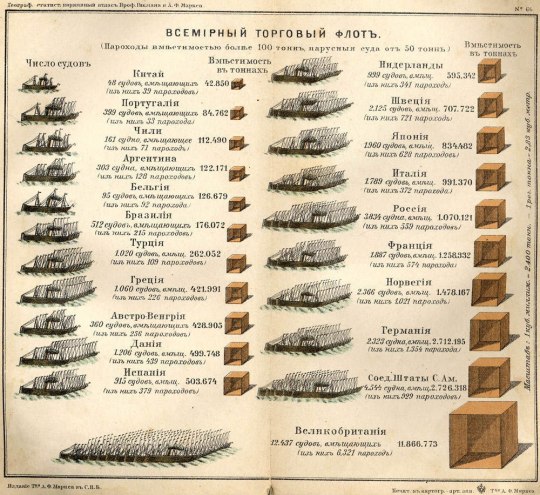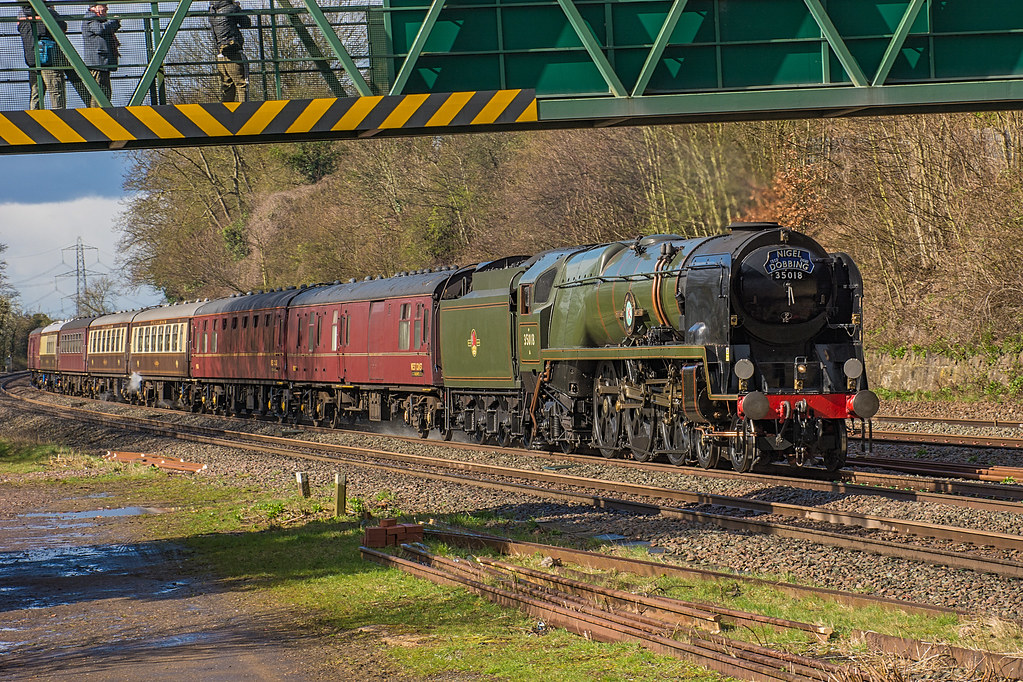#merchant navy (uk)
Text
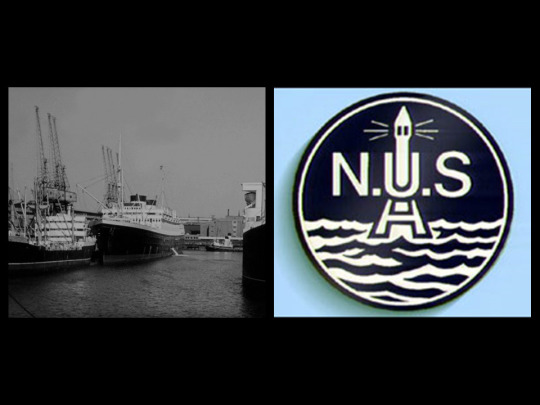
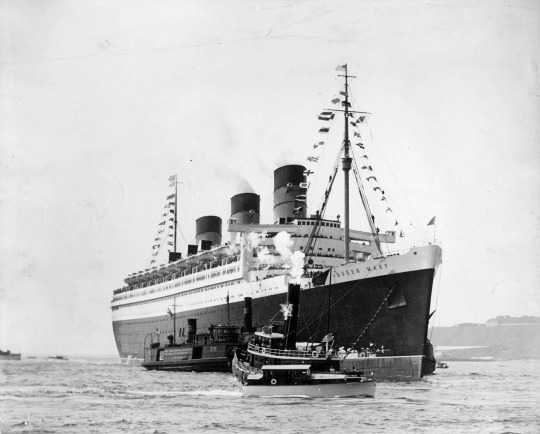
This week in 1966, (May 22nd), the Labour government of Harold Wilson declared a State of Emergency, one week into a strike by UK merchant mariners. This would provide the legal power to, amongst other things, cap food prices, and allow the Royal Navy to take control of shipping in British harbours. The Prime Minister told the House of Commons that such powers would not be used unless absolutely necessary, stating, "The government must protect the vital interests of the nation. This is not action against the National Union of Seamen."
International shipping had all but ground to a halt. Around 40 million pounds worth of exports were tied up, and both freight and passenger services were paralysed. As soon as the Queen Mary arrived in Southampton from New York carrying 850 passengers, 900 crew members immediately stopped work. (It's interesting to note the passenger-crew ratio, which speaks volumes about the state of transatlantic shipping at that time).
One of the union's demands was a reduction in working hours from 56 to 40 hours per week. Minister of Labour Ray Gunter conceded that pay and general working conditions for seamen needed to be modernised, but argued that the overtime claims that would inevitably result from the change in conditions the union was demanding, would derail the government’s attempts at wage restraint and their fight against inflation.
A week later, on May 28th, the Prime Minister upped the rhetoric, alleging that Communists were using the strike to gain influence over the National Union of Seamen. He said they were "endangering the security of the industry and the economic welfare of the nation". Not all of the governing Labour Party approved of Harold Wilson's new hard-line approach, but the strike then quickly ended, following a compromise between the union and shipowners, and the government’s commitment to set up an inquiry into employment conditions for merchant mariners.
(Main Source; BBC News)
#social history#uk politics#working class history#modern history#international shipping#merchant navy#maritime history#trade unions#workers rights#industrial action
24 notes
·
View notes
Photo
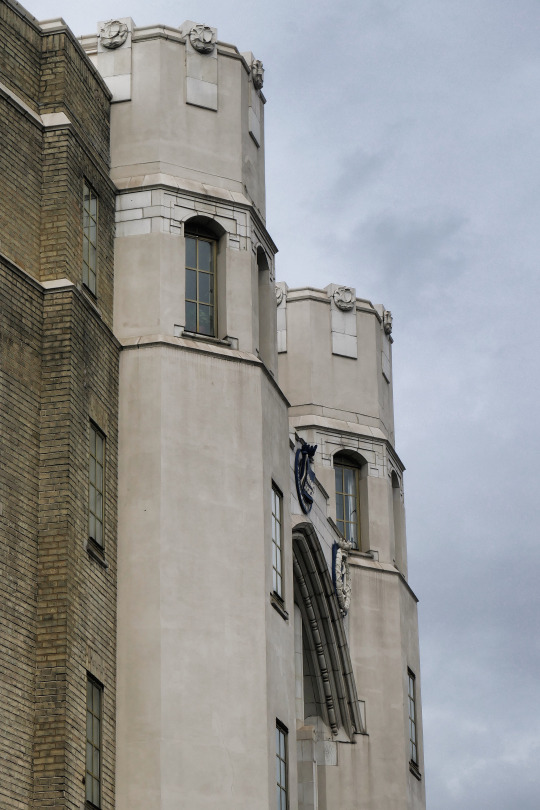
Day 1550, 20 September 2022
#seaman's mission#mission#architecture#history#historic#conversion#flats#apartments#merchant navy#Limehouse#London#England#UK
4 notes
·
View notes
Text
Sergeant George Booth, a twenty-nine-year-old observer with the RAF's No.107 Squadron, is usually credited as the first Briton to be taken prisoner in the Second World War. Booth's war ended the day after it had officially begun when his Bristol Blenheim was shot down over the German coast on 4 September 1939. The pilot was killed by the Wireless Operator, Air Gunner Larry Slattery, survived and, together with Booth, spent the next six years in captivity. They were among an estimated 170.000 to 200,000 British, Commonwealth and Empire men who were taken prisoner in Europe during the Second World War. This compares to the 90,000 Allied prisoners who were held in around a thousand camps around the Far East after Japan entered the war in late 1941.
Booth and Slattery left behind a country that was just embarking on what became known as the 'Phoney War' – when the population held its breath, waiting for a bombing onslaught that failed to appear. The first major influx of British POWs into German camps began nine months later in June 1940 when that phoniness gave way to a Blitzkrieg – or lightning war – as the Nazis swept down through the Low Countries into northern France. As the British Expeditionary Force (BEF), which had been sent to defend France, was evacuated from Dunkirk and other ports it was forced to abandon over 50,000 men who would spend the rest of the war as POWs. They entered captivity knowing that Britain faced the threat of invasion and that, if Hitler was successful, they were unlikely ever to see their homes again.
Each major Allied defeat made more men POWs. Germany's invasion of Greece and Yugoslavia in April 1941 was followed by the battle for Crete after which 11,370 Allied troops were captured in May 1941. The next big wave of POWs arrived from North Africa where Rommel was notching up significant victories. When he finally managed to break the siege of the Libyan port of Tobruk in June 1942, the garrison's 35,000 men, many of whom were South Africans, lost their freedom.
Since America did not enter the war until after Japan bombed Pearl Harbor in December 1941 only 62,000 of her soldiers became POWs in Europe. Most American POWs before D-Day were airmen. Soldiers began to be taken in large numbers when the Allies landed in Italy in 1943 and Normandy in 1944 and began to claw back parts of occupied Europe. The Germans captured over 6,000 men in September 1944 as a result of Operation Market-Garden when the Allies tried to establish a bridgehead across the Rhine at Arnhem; Hitler's surprise attack on the Ardennes (also known as the Battle of the Bulge) in a bitterly cold December 1944 led to around 23,000 Americans becoming POWs.
Most prisoners were soldiers. The nature of sea battles meant that few men serving in the Royal or Merchant Navy survived to becomes prisoners or internees – about 5,500 from each category. Around 13,000 British and Commonwealth airmen and 33,000 US airmen became POWs but their experience was very different from the other services. Of the 10,000 members of Bomber Command (about eight per cent of its total) who became POWs, many started their day with a British breakfast on British soil, and ended it in a cell where the enemy was keen to extract as much information from them as possible. The RAF did not suffer anything like the military setbacks of Dunkirk or North Africa and the peak year for Bomber Command was 1943-44 when 3,596 of their members became prisoners.
Becoming a prisoner in 1944 or 1945 felt quite different from becoming a POW in the early days of the war. Although the later prisoners had a sense that the war was drawing to a conclusion and that the Allies were winning, they still faced an uncertain future. Would they become hostages or even suffer execution at the hands of an enemy who felt he had nothing to lose?
— The Barbed-Wire University: The Real Lives of Allied Prisoners of War in the Second World War (Midge Gillies)
#book quotes#midge gillies#the barbed-wire university: the real lives of allied prisoners of war in the second world war#history#military history#naval history#aviation history#prisoners of war#ww2#phoney war#battle of france#dunkirk evacuation#britain#usa#germany#nazi germany#george booth#larry slattery#royal navy#merchant navy (uk)#raf
1 note
·
View note
Text
[BBC is UK State Media]
The BBC is the first British media to visit the USS Dwight D Eisenhower since it began this mission in November.
"This is deadly stuff," says Captain Dave Wroe, who commands the four US Navy destroyers which provide the extra protection for the carrier.
It arrived soon after Yemen's Houthi's began to target merchant vessels - they say in response to Israel's assault on Gaza.
Captain Wroe lists the threats they've been facing over the past four months: anti-ship ballistic missiles, cruise missiles, unmanned aerial vehicles, unmanned surface vessels, and now unmanned underwater vessels, or UUVs, all loaded with explosives.
UUVs are the latest threat. He says the F-18 jets on board the carrier have recently destroyed UUVs, before they could be launched.
Captain Wroe says the Houthis have posed the greatest challenge to the US Navy in recent history.
"This is the most since World War Two," he says [sic]. That was the last time the US operated in an area where they could be fired upon every day.
The tempo of operations on the aircraft carrier itself has also been unrelenting - with dozens of sorties being flown round the clock.[...]
Up in the carrier's flight control tower, Commander George Zintac, known as the Air Boss, is having to choreograph their movements - with a jet either launching or landing in just over a minute.
He's been in the US Navy for more than 30 years, but says "this is probably the most flying I've done on a deployment - everyday we're flying a tonne".[...]
Unlike the Houthis, they're away from home with few creature comforts. Every meal on board is literally feeding the five thousand. The food bill on the carrier alone is $2m (£1.6m) a month.
Captain Chris Hill, the commanding officer of Ike, says "people need breaks, they need to go home".
But he says they don't yet have dates for when that'll happen. So one of his tasks is to maintain the crews morale and resilience.[...]
Captain Hill says: "It's difficult to define winning and losing in this kind of conflict."
18 Mar 24
633 notes
·
View notes
Text

Jose Backstory Analysis (Version 3)
(Based on his backstory, deductions, letters, and other material)
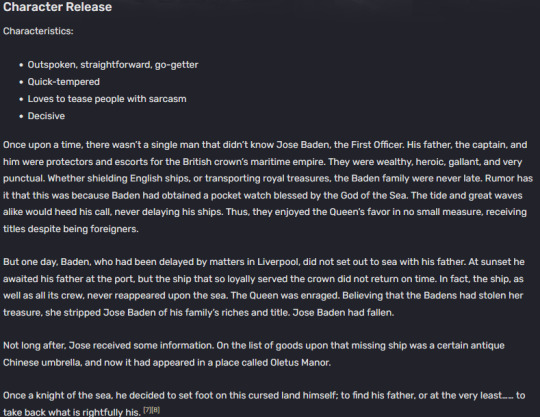
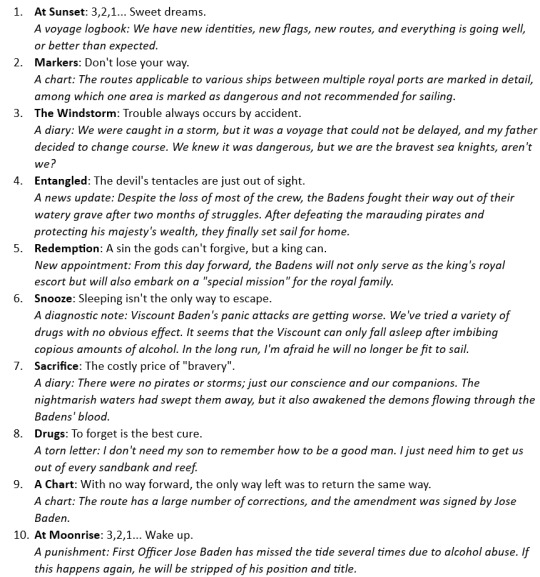
Spanish Origins
We know from Paella, Jose’s food dish which references “Spanish sailors”, combined with implications from Jose’s 1st deduction that he was likely born in Spain.
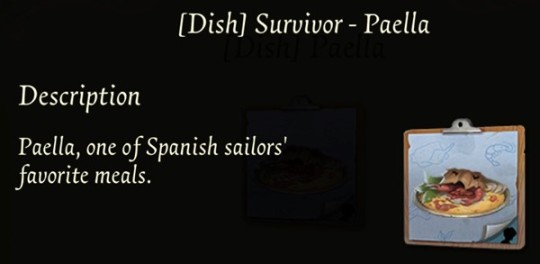
Paella is a Spanish rice dish made using a variety of ingredients (all families have a different way they prepare it). The word itself comes from a Valencian word that refers to the pan the dish is cooked in. It was originally made with rice combined with whatever else was available locally, and is traditionally served family style, with the pan in the center of the table which people would eat straight from using only a spoon.
Paella Valenciana is said to be made with chicken, rabbit, and varieties of Spanish green beans (as well as saffron, paprika, and potentially several other spices).
Paella de Marisco (Seafood Paella) is made with seafood (rather than meat like chicken).
Paella Mixta (Mixed Paella) uses both meat like chicken and seafood.
The paella in-game appears to be Seafood Paella.
The story of Identity V takes place at the end the 19th century. As Jose is stated to be 25 years old, that means he was likely born around the 1870s, a time when Spain was going through both political and economic turmoil.
Politically, it was going through a revolution that overthrew the current Queen, a failed attempt at a republic, and a coup before the restoration of the Bourbon monarchy.
As for economic problems, this was a period of economic recession and high unemployment. The country had been dealing with several conflicts, including the Carlist Wars and Ten Years' War in Cuba, leaving the country in deep debt. Falling into recession, the government attempted to modernize the economy, but political instability, social unrest, and resistance made it difficult.
The Third Carlist War was from 1872-1876. The Spanish Navy (which Jose's father at least may have been a part of) would've been tasked with controlling the seas and protecting Spanish interests, but they faced a lack of resources and equipment, in part due to the government's financial issues, potential budget cuts, and the above conflicts.
Joining the British Navy
From deduction 1’s mention of “new identities, new flags, new routes” combined with Jose’s backstory and the reasons above, they likely came to Britain to get away from the turmoil and conflict in the hopes of finding better opportunities (especially in terms of a job and pay) and a better life.
As Jose’s backstory implies people saw them as “foreigners”, it is doubtful they’d been in Britain long enough to become naturalized citizens before they joined the Navy.
To become a naturalized citizen, this would require them to live in Britain for 5 years and fulfill a few other requirements (good character reference, knowledge of the English language, apply for eligibility, etc...).
In 1870, they wouldn't have been able to become citizens by marrying a British citizen as the British Naturalization Act of 1870 made it so a British woman who married a foreign man would lose their British nationality.
At the very least, a different section of that law did state that children under the age of 21 of a naturalized father (or widowed mother) were deemed to be naturalized if they were resident in the UK with the father (or widowed mother).
This is important to note that the Royal Navy didn’t accept foreigners.
According to “The Queens Regulations and the Admiralty Instructions of 1861” it states that “Foreigners are not to be entered for Her Majesty's Service in any capacity, except as Bandsmen, unless with the sanction of the Admiralty, if on the home station, or of the Commander-in-chief, if abroad; but under no circumstances are foreigners to be entered for continuous service.”
On the other hand, the British Merchant Navy did, and in fact recruited a considerable number of them.
The Navigation Laws by that time, which previously restricted foreigners from serving in the British Merchant Navy, were relaxed.
The Merchant Shipping Act similarly had few requirements or restrictions on who could serve besides having some general standards for all seamen. It didn’t even really make a distinction between British or foreign seamen.
Many foreigners were attracted to the British Merchant Navy due to the employment opportunities, chance to travel to new places, and the potential for higher wages than they could earn in their home countries.
The issue with both the Royal Navy and Merchant Navy though were the minimum age restrictions.
For apprentices in the Merchant Navy, the minimum age seems to have been around 12.
For the Royal Navy, the minimum age back then (according to the Queen’s Regulations and Admiralty Instructions of 1861) was 14. Additionally:
The minimum height for boys aged 14 or 15 was 4 feet 8 inches.
They also needed to have a "robust frame, perfectly sound and healthy constitution, free from any physical malformation, and intelligent, a preference being given to those who can read and write".
The boys also had to bring some satisfactory proof of their age (ex: declaration of birth or certificate) as well as the consent in writing of their parents to enter the Navy.
They would then undergo a medical examination.
After the exam, they would be engaged to serve in the Navy "continuously for 10 years from the age of 18, in addition to whatever period may be necessary until they attain that age."
Part of the reason for the minimum age restrictions may have been due to compulsory schooling being a thing that was introduced around 1880 up to the age of 11.
With Jose 10 years old or potentially younger, he would’ve been below that minimum age requirement. Despite this, a number of children did join the Navy even though they were too young. They did this either by lying, falsifying documentation (such as birth documents), via their parents influencing recruiting officials (as in to look the other way for example), or so on.
Some boys wanted to be sailors after hearing tales from others, being encouraged by friends, out of necessity if their families fell on hard times and to escape poverty, or if they were orphans they’d do it just so they could acquire some kind of food and shelter.
Considering the sort of economic and political turmoil going on in Spain at this time, it wouldn't be too hard to believe Jose did this out of necessity, potentially to help his father. Since Jose’s social status is stated to be Nouveau riche, meaning they likely got their wealth after the incident in deduction 3 and 4 when they were rewarded by the Queen herself, that implies they could’ve been much worse off when they were still in Spain as well as when they 1st came to Britain.
Since Jose states he sees themselves as “brave knights of the sea”, it is also likely he was inspired to want to join by tales from other sailors too.
Since the 2nd half of deduction 1 is “everything is going well, or better than expected” (or “it’s all going off without a hitch. Or at least, with less hitches than we thought there’d be” based on the translated version), which is phrased as if they expected issues or for things to go badly, when combined with the phrasing of them getting “new identities”, it’s highly possible the reason they might have issues is because they were using fake identities.
Fake identities (aka aliases or assumed names) were something people did in fact sometimes create/use, even when signing up for the Navy back then.
It’s possible we can look at Wu Chang’s 4th letter as evidence of this, considering “Chang XXXX” has seemingly changed his name “many times”, and he is implied to also be a sailor based on the description. There's also how Chang Chip is the name of 1 of the 6 Chinese survivors of the sinking of the Titanic (which ties to that “huge boat” they were mentioned to have boarded together). After the event, they were sent to the UK to support the sailor shortage during World War 1, so there’s a good chance Chang was as well.
This fake identity could’ve included a fake age for Jose. It’s also possible their “fake identities” could imply they were using other fake information, such as fake names (maybe “Baden” wasn’t their real last name, maybe “Jose” isn’t either) or fake countries of origin (as in, they pretended to come from someplace else, like Germany, instead of Spain, which could fit considering “Baden”, at least to my knowledge, isn’t a Spanish name and might actually be a German surname).
The need for fake identities may also imply Jose’s father at least (as he is older and has done more things than Jose, potentially bad things) had something he wanted to hide, or something about his past he didn’t want others to know about when he came to Britain. I’m doubtful he could’ve already been a pirate or privateer, as neither really existed by the late 19th century, but it’s hard to say for certain.
Going back to Jose’s deduction 1 where it says things are going “better than expected”, I do wonder if this could’ve potentially been written by Jose’s father rather than Jose himself (considering both their ages and the authority Jose’s father had).
Jose’s deduction 3 and his backstory imply Jose’s father already had some kind of authority and may have already been a captain despite them still being foreigners, as it says it was his father’s decision to change course. This is a decision that’s normally made by the captain.
If Jose’s father was a captain, with his influence, it likely would’ve been a bit easier for Jose to get into the Navy if he were below the minimum age requirement (especially as it wasn’t monitored as closely as it is today).
Captains tended to not like hiring younger boys, which they saw as a "burden on their profits" (expensive to train, cost money to be fed, etc...) and for the 1st year or so gave little in the way of labor back to the owner. Most captains wanted men who had some training, not weak young boys with potentially little or no education.
Examples of potential jobs/roles for young boys:
Cabin boys (cleaning cabins, running errands for officers, assisting with maintenance)
Powder monkeys (carrying gunpowder to cannons)
Runners (carry messages)
Ship’s cook
Had almost no qualifications to be one back then.
Entry-level profession for young men or boys with no particular experience with cooking or sailing.
Commonly given to foreigners.
Back in the 19th century, it wasn’t seen as “men’s work” and so some tended to give to those without the rights skills or to those they saw as inferior.
There are examples of foreigners who started as cooks and became Captains later.
The life of a sailor wasn’t an easy one, especially for the young. Reasons like those listed below were why this life was viewed as “masculine” and “heroic”:
Lack of sleep was common (especially with the Naval Watch System, meaning 4-6 hours of sleep was more common than a full 8)
The food tended to be of bad quality (and monotonous)
Long hours of back-breaking work
Required great discipline
Regular presence of physical danger
Side note regarding the Naval Watch System:
In the navy, ships always have a patrol to check everything and everyone on board to ensure all issues are identified and resolved swiftly. The entire crew, depending on the size, is divided into 2 or 3 "watches" (traditional royal navy used a 2-watch system) and assigned 1 of 2 watch groups: port and starboard. These were then split into different divisions and assigned a different area of the ship.
With the 2-watch system, sailors would work for 1 four-hour watch, then rest for 4 hours before working the next watch. So, sleeping patterns would be very different to those on land. The 3-watch system was more popular as it gave a much longer rest period between shifts.
Each watch fulfilled its tasks in its 4 hours. The 24 hours in a day (a naval day started at noon) was divided into 5 four-hour watches and 2 two-hour watches.
Afternoon Watch: noon to 16:00 (4pm)
First Dog Watch (2 hours): 16:00 to 18:00 (6pm)
Last Dog Watch (2 hours): 18:00 to 20:00 (8pm)
First Watch: 20:00 to midnight
Middle Watch: midnight to 04:00 (4am)
Morning Watch: 04:00 to 08:00 (8am)
Forenoon Watch: 08:00 to noon
One bell (for those without the benefit of a pocket watch) signified a half-hour, so eight bells denoted the half-hours in a four-hour watch and the Last (second) Dog Watch.
The reason for the dog watches was to swap the crew over so the same people weren't always on duty at the same time (it helped reduce the monotony while on board ship, so it's a little less of the same thing over and over). It also allowed the entire crew to enjoy the evening meal.
1 theory for why it was called a "dog" watch had to do with the slang "dog sleep", which basically referred to a light nap.
“The Nightmarish Waters” Incident
Jose and his father weren’t anything special initially, but by deduction 3, they were assigned a mission Jose’s father saw as important, one that “could not be delayed��. So, when they encountered a storm, rather than be cautious, he took a risk in his desire to complete the mission, due to his desire to rise in the ranks and achieve fame and fortune. As such, he changed course, causing them to sail through an area that was marked on their charts as “dangerous and not recommended for sailing”.
Based on deduction 4 mentioning they protected the Queen’s “wealth”, it’s possible their mission involved transporting goods of some sort. Potentially important or valuable goods based on Jose’s father’s opinion that this mission “could not be delayed”.
Unfortunately, Jose’s father’s risk did not pay off and the situation took a turn for the worse, as the area he chose to sail through proved just as dangerous as it had been warned to be.
Jose in his deduction 7 says there was “no storm” but there were “nightmarish waters”. Jose has no reason to lie about this in his own personal diary, not to mention everyone else on board could see the weather as well as he could. So, if it wasn’t a storm, other options that “nightmarish waters” could refer to include: rouge waves, strong currents, underwater hazards (ex: rocks, shoals, underwater canyons), obstacles, unpredictable weather patterns (ex: sudden squalls or micro bursts), etc...
There's no way to know without more detail, but I will say Lakeside's backstory references a sudden hurricane (to compare to deduction 3 titled "Windstorm"), and in Fiona's 4th letter, she talks about the lake water being odd (rising when normally it was always still).
Fiona's 1st letter uses the term lagoon, which is a shallow body of water that is separated from a larger body of water, like the ocean, by a barrier, such as a coral reef or sandbar.
Coral reefs and sandbars are hazards that can cause shipwrecks.
From deduction 4 and 7, we know the “nightmarish water” they encountered caused most of the crew to perish, though Jose and his father survived. This likely means the ship was damaged or sank, which could explain why it took 2 months before they could sail back home to complete the mission. If the ship took damage, it’s possible at least some of their cargo was also damaged or lost.
The fact it took 2 months to return is likely true considering everyone awaiting their return or for their cargo would be aware of how long they were missing.
So, much of the crew died, the ship was at least somewhat damaged if not totally, and they lost at least some or all their cargo, but they were able to sail home after 2 months. But before then, they likely washed up on shore somewhere and were stuck there until they could perform the necessary maintenance to their ship, or if they shipwrecked, until they could acquire appropriate means to allow them to sail back home.
Everyone’s feeling pretty depressed after everything they’ve lost, while Jose’s father is especially upset over the possibility he will fail this mission and thus ruin any future opportunities with the British Navy or with achieving fame and fortune. This is what leads to another detail from Jose’s deduction 7: that the “nightmarish waters” had “swept away” both the crew and their “consciences”.
Lacking a “conscience” means that the person is willing to do anything they want and not worry about the consequences. They’d be willing to hurt others and then show no remorse afterwards. They don’t care how their actions affect others.
At the same time, it confirms the way Jose’s father was leaning due to his desperation to ensure this mission would succeed at any cost, as it says “it also awakened the demons flowing through the Badens' blood”. The crew acting without a conscience and Jose’s father willingness to do anything to ensure success to the point its described as awakening “demons” heavily implies they became so desperate that they did something bad to ensure they could complete the mission and return home.
Theory: The Badens Involvement in the DeRoss Tragedy
My theory is they landed or wrecked near Lakeside Village and Oletus Manor, like the shipwrecked sailors shown during Season 18 Essence 3 and Season 19 Essence 1.
Then, once their ship had been sufficiently repaired or they had found a replacement, to help recoup the loss of their cargo, they participated in or led the attack on Oletus Manor, the same attack that caused the death of Alice’s parents and her separation from Orpheus.
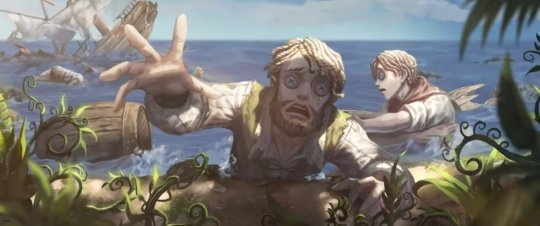
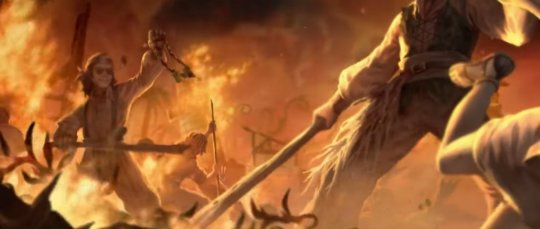
Returning with Trauma
After carrying out their attack, they sail home and show their (stolen) spoils to the Queen. Jose’s father lies about what actually happened, saying they suffered in a bad storm and struggled against pirates but managed to guard the Queen’s “wealth”. This fake story is reported in the newspapers and the Queen rewards him handsomely for his actions, granting them “titles” (like Viscount to Jose) and their own wealth (how they became nouveau riche).
Additionally, according to 1 backstory, it states that, along with receiving the “Queen’s commendation”, they also received “the honor of leading the Royal Navy”, meaning they may have been transferred from the Merchant Navy to the Royal Navy by this point.

Jose’s father is happy to finally achieve his dreams of fame and fortune. The same can not be said for Jose, who is horrified at his father’s actions since the incident when he attacked and stole from innocents that helped them after their experience with the “nightmarish waters” as well as lying about what happened. Jose’s father likely refused to let Jose reveal the truth to anyone, which is likely why he wrote about it (to himself) in his personal diary.
There’s also a good chance he did this in part to try to help deal with his own trauma.
Jose, as I said, was potentially around 10 years old during this incident. This is based on Alice, who is 21 in the present, was reportedly 6 years old at the time of the tragedy. Meaning Jose, who is 25 in the present, would’ve been 10.
Besides basing it off Alice’s age, Jose being young to some degree (even if he’s not exactly 10) would also explain Jose’s trauma, and how he had such bad “panic attacks” and “night terrors” that nothing could cure. To the point the only way he was able to sleep was by drinking to try to help him forget.
Night terrors tend to affect children under the age of 13 more often than others, which Jose would be if he were 10 during deduction 3 & 4.
Panic attacks are more common in older teenagers and young adults, but it can happen due to being affected by a traumatic event. Younger children, like a 10-year-old, can be more easily traumatized as they're still in their developmental period, making them more vulnerable to stress or trauma. Though not all children develop psychological problems, as it depends on the severity and duration of the trauma, as well as their age, support systems, and temperament. They also have more difficulty processing or coping with such events and are more likely to experience physical symptoms in response to trauma.
Jose’s trauma was caused by:
His involvement in an incident that wrecked or damaged their ship enough to put it out of commission for 2 months with a high loss of life.
His involvement in an event where innocents, who likely helped the survivors of the nightmarish water and shipwreck, were attacked, their home looted, and some number killed, including the owners of the manor.
Both events he was involved in were caused by his own father, who lied about what actually happened.
A lack of support (we have no knowledge of his mother, friends, or other support systems, and his father doesn’t truly love him and only sees him as an object that he wants to ensure does his job) or coping systems.
As additional proof, we know both Alice and Orpheus are confirmed to have been deeply affected by the events of the tragedy.
Alice was called the "mad girl of doom" after the tragedy in the news articles from the official artbook, and her official backstory states she suffered "hysteria", while her trailer shows some of what happened in the asylum.
Orpheus during 1 of his trailers said he tried to "escape from reality", as well as suffered shock and delusion. It is also highly likely it is because of this event he develops his Nightmare personality as well as becomes the manor owner and eventually begins the manor games.
Jose’s Blessing
From here, the Baden family’s fame and fortune continue to grow, just like Jose’s father wanted. Unfortunately, Jose’s issues only continue to worsen over time, but Jose’s father doesn’t care and forces his son to continue helping him (the Captain) in his (Jose’s) role as First Officer. The major reason Jose’s father needs Jose is because of his son being “blessed by the god of the sea”, which caused “the winds [to] be silenced” and make the “ocean calm”. Considering the “nightmarish waters” that killed a majority of the crew, Jose likely had to have gotten this blessing right after that incident before they sailed home, or sometime after they finally completed that mission.
There is no information regarding where or how he got it, so the best we can do is guess.
Regarding the watch itself, the symbol on it is a Fouled Anchor:

Foul: a nautical term meaning to entangle or entwine, and more generally that something is wrong or difficult
Fouled anchor: refers to when the anchor has become hooked on some obstruction or has its cable wound around it
It is a condition at sea that is to be avoided, as it may cause the vessel at anchor to "drag" its anchor, thus endangering the vessel. To correct the situation was dangerous and time-consuming, and could usually only be accomplished by the most experienced sailors on the vessel
The fouled anchor has been the official seal of the British Admiralty/Lord High Admiral since 1588 (personal seal of Lord Howard of Effingham, who helped defeat the Spanish Armada).
It is also the emblem of the Chief Petty Officer (US Senior Noncommissioned Officer Rank)
Due to the fact the symbol and watch itself aren’t anything unusual (the watch itself was likely for the watch system aboard the ship, which I explained earlier), I don’t think he received the watch itself, more likely he already had the watch but it was blessed by someone or something else.
One possibility is he got it from Lakeside Village after they shipwrecked or when they landed when their ship was damaged from the nightmarish water. Fiona in her 4th letter does discuss the bottom of the lake and something strange about it, and we already know the villagers at Lakeside worshiped the lake deity aka Hastur, who has a Poseidon skin. Maybe if Jose fell in the lake after their wreck, that could’ve been when he got the blessing? Maybe from Hastur? Or maybe from Grace, or whoever that voice that spoke to her was in her last deduction.
Another idea is he got it some other way while at the village or Oletus Manor, since Dennis and his family did like Greek myths, but who knows.
Getting it while at Lakeside Village or Oletus Manor sometime during, after, or because of their trouble with the nightmarish water feels like it’d make the most sense.
I don’t think he got it as a reward or for any other reason from the Queen. If she did have it, why not give it to someone else sooner, or why not take it back when Jose’s father disappeared, since if she stripped the Badens of everything in her belief his father stole her treasure, she should’ve taken the watch with the blessing too if it did come from her.
I also think he would have to have gotten it fairly soon after the incident and their return, as Jose’s backstory implies a major part of their fame and success came because of that blessing.
(Even though Jose’s 4th letter mentions “The swaying pocket watch is finally back where it started” when he sees the umbrella, I’m not sure the blessing could’ve come from Wu Chang, as it was only recently they had it aboard the ship before his father disappeared, and the blessing is phrased like it’s been around awhile. It’s also possible that there is no blessing and it just has to do with the hypnosis he performs on himself or the “deep hypnosis” done to him, but we don’t know right now. I’m not yet ready to say for certain it’s not real, as Jose’s father is pretty intent on his son doing his job that it seems suspicious. Anyways.)
Drugs and Forgetting
Either way, for now, due to the lack of any information on this subject, it’s impossible to say for certain how exactly he got it. All that matters for now is Jose’s father needs it to continue to ensure his fame and fortune, which is threatened by Jose potentially being unable to sail due to his worsening panic attacks/night terrors.
Jose’s father needs to find a fix for this problem, but not because he cares. He still only sees Jose as an object, and just wants him to continue to do his job to ensure his own success and wealth.
Jose’s deduction 8 references “drugs” and “to forget is the best cure”. This implies Jose’s father may have at least thought about trying if not actually attempted to use drugs on Jose. Though we know from his deduction 6 that doctors “tried a variety of drugs with no obvious effect”. This implies Jose’s father had to have either been trying something abnormal, not one of the usual drugs.
If not drugs, it may at least imply he sought or attempted to utilize a solution that involved making Jose “forget”. As the trauma causing Jose’s night terrors and panic attacks revolved around the incident in deduction 3 and 4, caused by the nightmarish water which potentially led to Jose’s father participating on the attack on Oletus Manor, Jose’s father may have needed to cure Jose by making him forget that entire incident.
In terms of not the usual types of drugs, we know the manor owner has several, including Dionysus and Hydra which revolve around changing a person’s memory (either to forget or to rebuild it).

Though if Jose’s father did help cause the incident that resulted in the death of Alice’s parents, I’m unsure if the manor owner would want to help. Not to mention it seems like few are actually aware of the drugs he’s created, so I’m unsure if Jose’s father would’ve been able to hear about them himself. Though if he did, it’s possible he might’ve wanted to try to use his drugs on Jose. On the other hand, we do know Jose’s father to some degree was working with Sam Bourbon based on Jose’s 2nd letter, which states he carried cargo which belonged to Sam.

I say Sam as he was the 1 to create Dovlin, which is confirmed by both Demi’s release backstory as well as Demi’s 3rd letter. Dovlin we know was very popular based on her backstory, so much so that when Sam disappeared and Demi had to take care of the bar, business was bad because all the customers wanted was dovlin, and Demi didn’t have or know the recipe. Only Sam did.

From parallels with the summer event with Sea Salt Mocktail as well as Demi’s 3rd letter, we know dovlin uses the same “raw materials” the manor owner uses with his own drugs, except its effects (dovlin presumably) compared to the owner’s own drugs were “completely different (opposites even)”, and that a “strong drug resistance [is] created by any interactions between them”. He even essentially described dovlin as a drug when he said “the final effects of the drugs were completely different”.

The summer event and Demi’s backstory and deductions also tell us dovlin can be addictive if you drink too much of it (but that’s alcohol in general). Kevin’s description of the key ingredient for sea salt mocktail includes how it “greatly enhance[s] the flavor of food”.
From Demi’s 2nd letter, it implies the initial effects of dovlin caused the mice to “all [die] in fear with no exception”. In-game, health is called “fear”, so dying of fear would be like a survivor being downed or eliminated. Also, from in-game we know the description for dovlin states that it “reduce[s]” fear aka it heals damage a survivor has taken. Helping eliminate “fear” could be the sort of thing that might help Jose with his panic attacks/night terrors and inability to sleep, and thus help him to be more fit to sail.
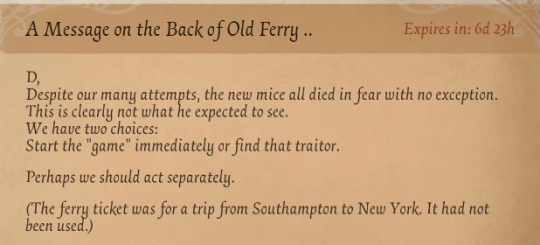
Although, I haven’t seen anything explicit that says dovlin helps you to “forget” (besides the false myth that alcohol can make a person forget), though maybe that’s how it “reduces” fear, by making the drinker forget their problems.
The only other issue I can think of is how Sam didn’t perfect his dovlin recipe until later, meaning I don’t think it could exactly “heal” yet, though it may still make the person “forget”. So, there’s a chance he wasn’t given dovlin yet. Or maybe Sam told him it wasn’t complete yet but had Jose’s father help him, potentially by retrieving the material he needed based on Demi’s 1st letter as well as Jose’s 2nd letter.
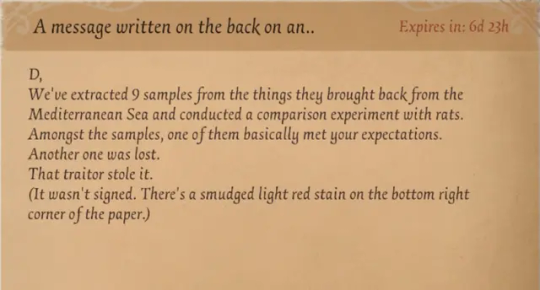
The last option is Vilhelm Lamb from Wu Chang’s 4th letter, who may be the “medical professor” that adopted Alice aka “Eury Lamb” to be an “experimental subject” and subject her to “prolonged medication and physical therapy”. As we know Jose’s father, Joaquin, was working with Vilhelm, that means Joaquin knew Vilhelm and could’ve asked him for something to fix Jose. If he is performing experiments, and is even using “medication”, it’s possible he also had “drugs” that could make Jose forget (or in some other way allow Jose to do his job). It’s even possible Joaquin was doing the job he was for Vilhelm as (basically) payment in return for the drugs for Jose.
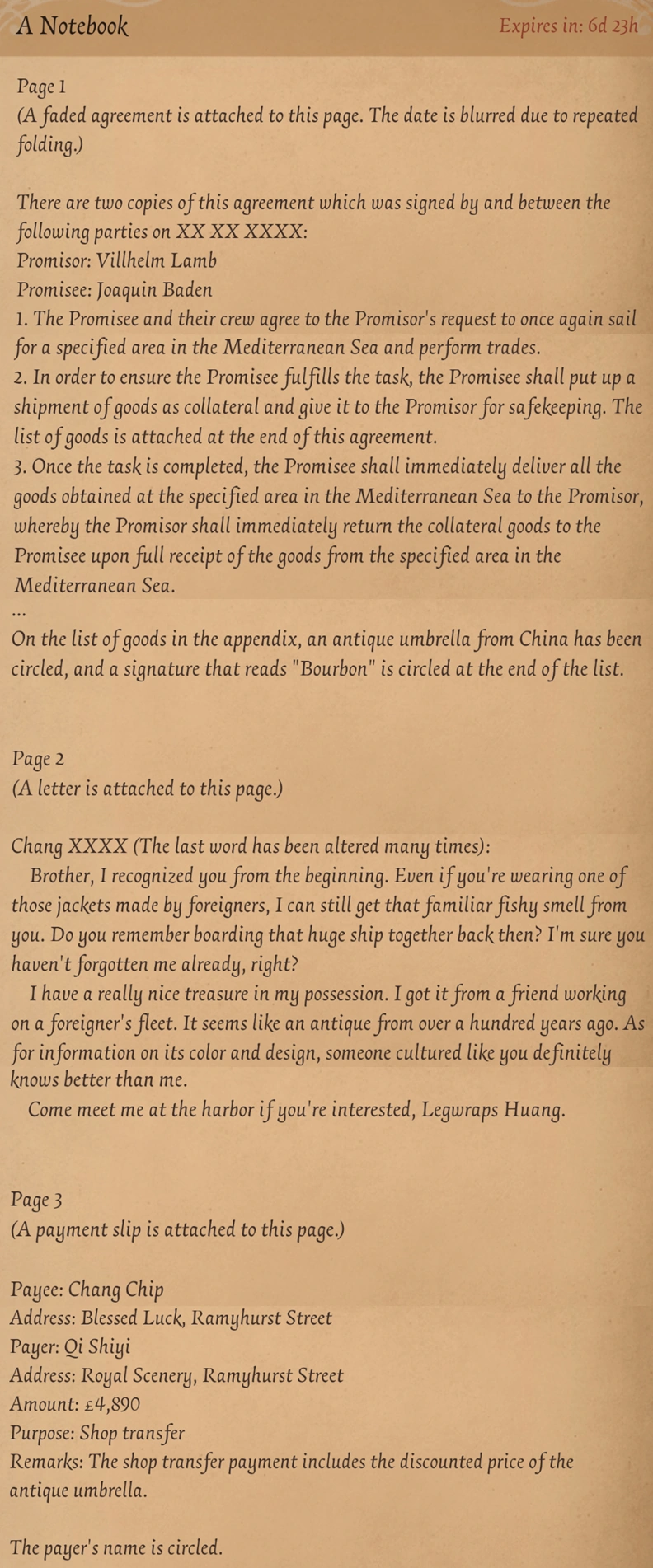
Route Amendments
It is unknown whether or not he did actually give something or do something to Jose, especially as Jose’s deduction 8 (when translated) mentions the letter Jose’s father wrote to whoever he was asking to help fix Jose is described as being “torn to shreds”. The fact it’s “torn” may imply Jose happened to see the letter his father wrote, though it’s also possible his father or recipient tore it up to keep it secret, but I’m not sure I see Jose’s father being the type to do that (or really care much if Jose or someone else saw it). I could be wrong though.
Considering Jose in his 4th letter mentions “drugs” (that cause hallucinations) it makes me wonder if this could be evidence that his dad did in fact use something on him, but also that Jose found and was aware (at least eventually) of what his dad was doing.
If Jose did see the letter his father wrote, it could relate to why his next deduction (9) mentions Jose having made a “large number of corrections” to “the route”. This sounds like a specific route, a single one rather than many. If we’re talking about a particular route Jose made changes to it in response to learning his father wants him to “forget” (about the incident), the route he amended may be the alternate route Jose’s father took in response to being caught in a storm. The route that led them to the “nightmarish waters”, causing the loss of most of the crew and cargo, as well as damaged or sank their ship.
If Jose thought he might forget, it’s possible he made corrections to the “dangerous” route to better outline why it is dangerous, based on their experience when his father took that route to avoid a storm in an attempt to avoid being delayed. This might’ve been to dissuade anyone using that chart (like his father, though he doesn’t seem the type to let this sort of thing change his mind) from using that route. It’s also possible he made these changes to help remind himself (if he did forget) about that route being dangerous.
Maybe he did this help himself avoid going on a voyage if they did use that route. Maybe that’s why he didn’t board the ship on certain voyages.
Jose as a sailor in the navy isn’t a coward, and he didn’t seem to avoid every voyage, as based on his backstory he did serve well to honor the Baden family name, as well as help his father earn fame and fortune. Yet we know at least close to when his father disappeared as well as the day he did disappear, he was being reprimanded for failing to board several times. I think the reason he fails to board those times, and thus why he drinks, is because of his panic attacks and trauma, as drinking is said to be the only way to allow him to sleep (he doesn���t drink only because he enjoys it).
It’s possible on those days he happened to have a panic attack or nightmare. It’s even possible he might’ve had either even if he was made to forget, as some part of him might’ve still remembered, and that was why he was drinking and failed to board the day his father disappeared (based on implications from Departure Date’s design notes). Or maybe his trauma was triggered if the voyage they were going to take that day involved the “dangerous” route or their destination being Oletus Manor (if Jose’s father made deliveries there to Sam while he was working on dovlin, or even deliveries to the manor in general as both Sam and the manor owner’s drugs used the same raw material, aka the ferns), which are places tied to his trauma.

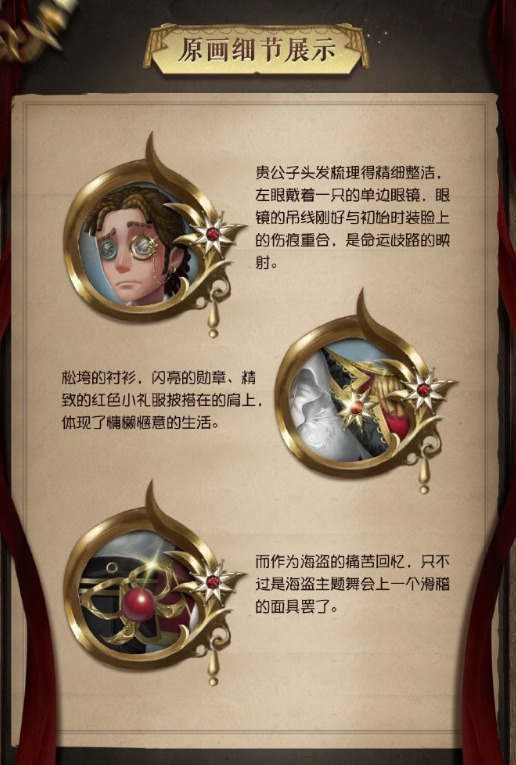
It's possible that Jose was made to forget, as he doesn’t seem to reference or hint towards the nightmarish water incident later despite being at the manor. Maybe the reason he was potentially partying and drinking fairly care-free the day his father went missing based on Departure Date, who doesn’t seem obviously suffering from trauma, was because his father succeeded in making Jose forget how to be a “good man” as implied by his father in Jose’s deduction 8.
“Deep Hypnosis”
Maybe he forgot because of drugs. Or maybe it was because of the “deep hypnosis” hinted at by the manor owner in Jose’s 3rd letter (which also describes Jose as a “gift” from an “old friend” that passed away, which helps to provide a bit more evidence to the idea Jose and his father knew the manor owner aka Orpheus in some way).

We have no information who did it. Not even the manor owner seems to know. The only thing we do know is whoever did it buried a “spiritual anchor” for him that he could use to avoid a mental breakdown. The only 3 specific options I can think of so far for who did it are:
Jose himself, as his ability in game is hypnosis and we know he performs “self-hypnosis”.
Jose’s father, who’d have access to Jose’s watch to some degree, as Jose’s watch is the thing Jose uses in-game to perform hypnosis.
A bit of a crack theory, but the 3rd idea is Ada, who we know is the 1 person in the story said to “devote herself to hypnotherapy research, using hypnotic suggestions to eliminate the pain, fear, and other negative emotions plaguing her patients”.
Jose, I think, is unlikely as I don’t think you can perform “deep” hypnosis on yourself.
Jose’s father I’m doubtful of as “deep hypnosis” should likely require someone experienced and skilled.
The above reasons are essentially why Ada feels the most likely, even though we have not seen her related to Jose’s backstory at all yet. I do think it’s possible he could’ve been sent to the asylum (and maybe the church’s doctors are the ones who tested various drugs on him in deduction 6).
Back then, people didn’t understand mental health. Those who exhibited PTSD or other mental health problems didn’t receive the help they needed because they didn’t recognize or understand the issues.
By the end of the 18th century and during the 19th century, there was an increase in the number of sailors being admitted to London’s asylums due to mental breakdowns, especially after major battles.
The men suffered from severe anxiety, depression, and trauma. But back then, people only recognized the symptoms, such as partial paralysis, sleep disturbances, dysesthesia, delusions, and so on.
It also took a long time to recognize malnutrition, trauma through violence, and mistreatment.
Doctors noticed sailors in their everyday lives were "restless, had severe insomnia and delusions, and their moods quickly went from happy to sad". These were actually cases of bipolar disturbances, but doctors treated it like a fever, so many sailors ended up hurting or even killing themselves. The doctors just didn't know how to deal with these men.
Depression was dismissed as melancholic mood, which was treated with sea air, sunbathing, and walks.
Schizophrenia was treated liked malaria.
Many hoped for help in the asylums. Around the start of the 19th century, maybe 25% recovered, while another 25% died due to the treatment, and a good number simply disappeared. More serious cases were sent to Bethlem Hospital, 1 of the most notorious/infamous asylums.
The men here were seen as incurable. Conditions in the asylum were inhuman. Basic equipment (tables, chairs, beds, plates, cutlery) were forbidden. Sanitation was non-existent. They had a minimal diet, no medicine or fresh air, and were left to fend for themselves.
Mental issues had a stigma attached and those seen as having those issues were called insane. As a result, many attempted to hide their problems, otherwise they'd face social trouble or weren't taken seriously.
Sailors were seen as masculine and tough, which led society believing them incapable of having such illnesses, yet depression was indeed a major issue in the Navy.
Pressure from their higher-ups and a high demand for results in a short time worsened things.
Even officers were affected, due to the strain of responsibility.
The Navy Board considered men who were unable to perform their duties as having no place in the Navy and doctors were of the opinion that mental health issues made people "unfit for service".
While Jose’s at the asylum, he could’ve met Ada, who may have had the chance to perform hypnotherapy on him, which feels like it’d be very fitting for him. In her 4th deduction, it’s even said she studied and researched “psychology”, which again would fit with Jose’s issues. Emil in Ada’s 9th deduction is even said to suffer “recurring night terrors”, while 1 of his backstories mentions him having PTSD, which are the same sort of issues Jose is suffering from according to translations of Jose’s 5th deduction.
The Disappearance
Whatever the case, we know Jose fails to board his father’s ship 1 day while likely drinking in Liverpool, potentially due to a panic attack or nightmare or some other issue (or because he forgot), with Liverpool potentially being where they usually depart from (and thus could be where they may live close to).
From Jose’s 1st letter, we know the mission was supposedly to go to some spot in the northeastern corner of the Mediterranean.

We know they brought mostly weapons like cannons instead of cargo out of caution due to the area being somewhere they apparently hadn’t been to before. The 1 non-weapon we knew they had was Wu Chang’s umbrella.
As the Queen thought they had stolen her treasure afterwards, as well as how they were said to “serve as the [Queen’s] royal escort”, meaning they might be protecting royals or their treasures, combined with how Jose’s backstory states they performed tasks such as “shielding English ships, or transporting royal treasures”, the latter may have been why they had the umbrella that day. In general, guarding her treasures may have been the “special mission” she assigned to them back in deduction 5. The antique umbrella may have been 1 of her treasures.
From Wu Chang’s 4th letter, we’ve learned that Joaquin, Jose’s father, was in the Mediterranean Sea to “perform trades” on behalf of Villhelm Lamb, with some of their cargo, including the umbrella, as collateral.
This connects back to Jose’s 2nd letter, as we hear about the “Bourbon” signature, and back in Jose’s 2nd letter, he said he saw the signature “Bourbon” on his father’s “list of goods” once. With what we now know about Villhelm, considering Jose says he’s only seen that signature “once” that implies Joaquin and Sam likely only worked together on this one mission (rather than them having a long term partnership).
The collateral (including the umbrella) would be returned once Joaquin gave Villhelm the “receipt of the goods from the specified area in the Mediterranean Sea”. We know from Jose’s 1st letter that Joaquin and his crew, aboard their ship which is called the Parthenope, never returned from this mission, which is why we see the umbrella exchanging hands in the latter part of Wu Chang’s 4th letter. It ends up with Qi Shiyi, who likely brought it with her when she went to the manor for her game. Jose goes to the manor himself when he learns that the umbrella is there.
Based on Jose’s 1st letter, as it says “the cannons couldn’t kill them”, it seems the crew somehow ended up hallucinating, which ends up being what caused their deaths (they likely sank, maybe by shooting their cannons at their own ship).
Considering we know Sam had some involvement with this voyage based on his signature, I do wonder if it’s possible he’s the reason the crew hallucinated. I’ve already discussed Sam and dovlin, as well as Demi’s 2nd letter, which states “the new mice all died in fear with no exception”. The crew based on Jose’s 1st letter were definitely “afraid”, and in terms of Sam’s experiment, they could be seen as “mice” aka lab rats. Since we know everyone died and the Parthenope likely sank, everything would match with what’s said. Joaquin and the crew of the Parthenope may have been experimental subjects for Sam’s dovlin and/or the manor owner’s drugs.
Shipwreck
If the Parthenope sank in the Mediterranean, that could mean that the shipwreck at Lakeside came from the Baden’s incident during Jose’s deduction 3 and 4, after the “nightmarish waters”, and why they ended up at Lakeside and the manor, which leads to them potentially getting involved in the tragedy where the DeRoss couple died.
Notable items on the ship include:
Map of the Mediterranean
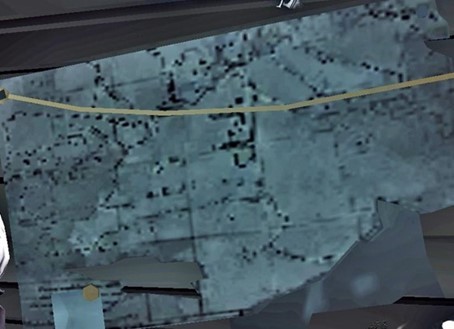
Chinese symbols matching the ones on Xie’s (White’s) compass
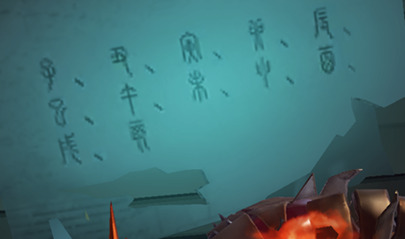
The Teru Teru Bozu doll (used to pray for fine weather)
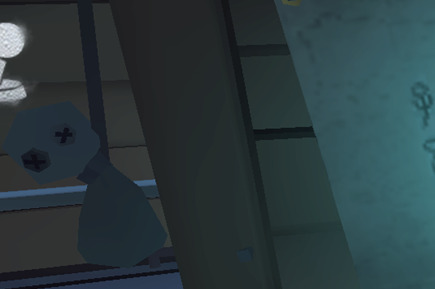
Picture from Jules Verne’s Twenty Thousand Leagues Under the Sea depicting a sailor being grabbed by a giant squid

The Nighttime picture which seems reminiscent of Wu Chang’s trailer when Fan dies

The Jolly Roger/Cthulhu flag

“SAVE” (written in blood?)

The other reason being how we know Wu Chang’s umbrella ended up at Oletus Manor.
Various letters, including Hastur’s 2nd letter (which is before the Lakeside villagers disappeared) and Fiona’s 3rd letter, both describe it as a “shipwreck”. We also know the route Jose’s father took was described as “dangerous” and having “nightmarish waters”, and so entirely capable of causing a shipwreck.
Going to Oletus Manor
Jose waits from sunset to moonrise (as indicated by the titles of Jose’s 1st and last deductions, as well as from his backstory) for his father’s return, but he never appears.
The time between Sunset and Moonrise is usually between 30-90 minutes.
Due to the ship’s disappearance, the Queen believes they stole her treasure, leading her to punish the Baden family by taking their family’s wealth and titles.
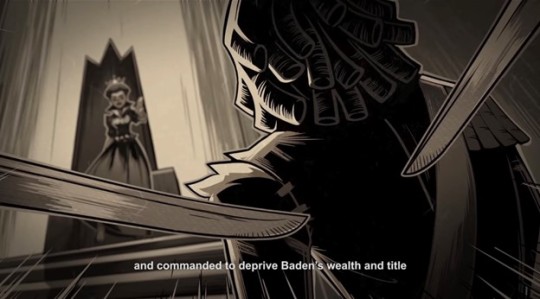
Sometime after this, Jose hears that the umbrella turned up at Oletus Manor, and so he goes there to either find his father (despite how Jose’s father didn’t love Jose and how he treated his own son, Jose still attempts to look for him) or “retrieve our honor”.
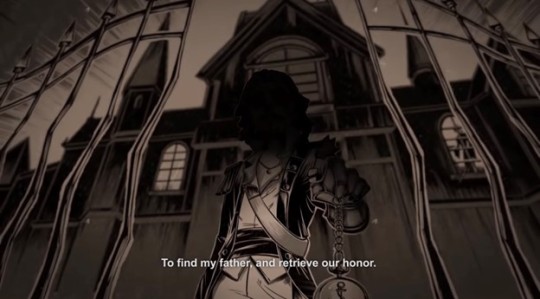
Miscellaneous
Scurvy

Scurvy is caused by not having enough vitamin C (something the human body doesn’t produce naturally), which orange juice is rich in.
Back then, before refrigeration, sailors needed to ensure they had enough food on board to survive the journey. This meant mostly only salted or nonperishable food, like ship’s biscuits, salted beef, pork, cheese, and fish. Thus, without regular access to things like vegetables or fruit, sailors developed scurvy.
Scurvy killed more than 2 million sailors between the time of Columbus’ voyage and the rise of steam engines in the mid-19th century. The problem was so common that shipowners and governments assumed a 50% death rate from scurvy for their sailors on any major voyage.
The 1st symptoms of scurvy developed at least 3 months after having extremely low vitamin C levels.
The earliest symptom is lethargy, which was so intense people once believed laziness was a cause of the disease.
It was debilitating. Your body feels weak. Your joints ache. Your arms and legs swell, and your skin bruises at the slightest touch.
As the disease progressed, your gums become spongy, and your breath fetid, your teeth loosen, and internal hemorrhaging makes splotches on your skin. Old wounds open; mucous membranes bleed. Left untreated, you will die, likely from a sudden hemorrhage near your heart or brain.
Scurvy is treated by adding vitamin C to your diet. Most people treated for scurvy feel better within 48 hours and make a full recovery within 2 weeks.
Scurvy was brought to the public's attention due to commodore George Anson's journey around the world. He set sail with 6 ships for the Pacific in 1740 with 2,000 able seamen. When he returned to England with less than 700, the rest were found to have died due to the disease.
Anson's chaplain described their deaths this way: "those affected have skin as black as ink, ulcers, difficult respiration, rictus of the limbs, teeth falling out and perhaps most revolting of all, a strange plethora of gum tissue sprouting out of the mouth, which immediately rotted and lent the victim’s breath an abominable odor".
The Royal Navy discovered a solution to the disease in the 18th century thanks to surgeon James Lind. His experiment on board a naval ship in 1747 showed that oranges and lemons could be a cure for scurvy.
Explorer Sir Richard Hawkins in 1622 was the 1st to suggest citrus as a cure.
Dutch writer Johann Backstorm was the 1st to establish the true cause of scurvy
Captain James Cook circumnavigated the world from 1768 - 1771 on board his ship the HM Bark Endeavor, during which time no life was lost to scurvy.
Cook claimed it was because of the malt and wort he brought on board to test as a cure, but malt doesn't have vitamin C. His cleanliness and strict orders not to drink fat from the chef’s pans (that when came in contact with copper, irritated the bowels and made it hard to absorb vitamins) were actually more helpful.
Besides malt and wort, 1 other thing Cook had, found on the log of provisions put aboard, was 7,860 pounds of sauerkraut. Sauerkraut, which is made by fermenting thinly sliced cabbage in its own natural juices, is rich in vitamin C, though that fact was unknown at the time.
It wasn’t until 42 years after Lind’s experiment that the Admiralty first issued an order for lemon juice to sailors
Before Lind, some potential cures included:
"elixir of vitriol" (a dilute solution of sulphuric acid)
blood letting
applying a piece of turf to the patient's mouth to counter the "bad qualities of sea-air"
soup block (bones and scraps of meat from carcasses, boiled down then dried)
Cider
Sea-water
vinegar
1 cure besides citrus that did work involved sailors who ate the ship’s rats (as they synthesized their own vitamin C)
Superstitions:
Believed redheads were bad luck. If a sailor met a redhead before boarding, the sailor had to speak to the redhead before they spoke to him to mitigate the bad luck of encountering a redhead before setting sail.
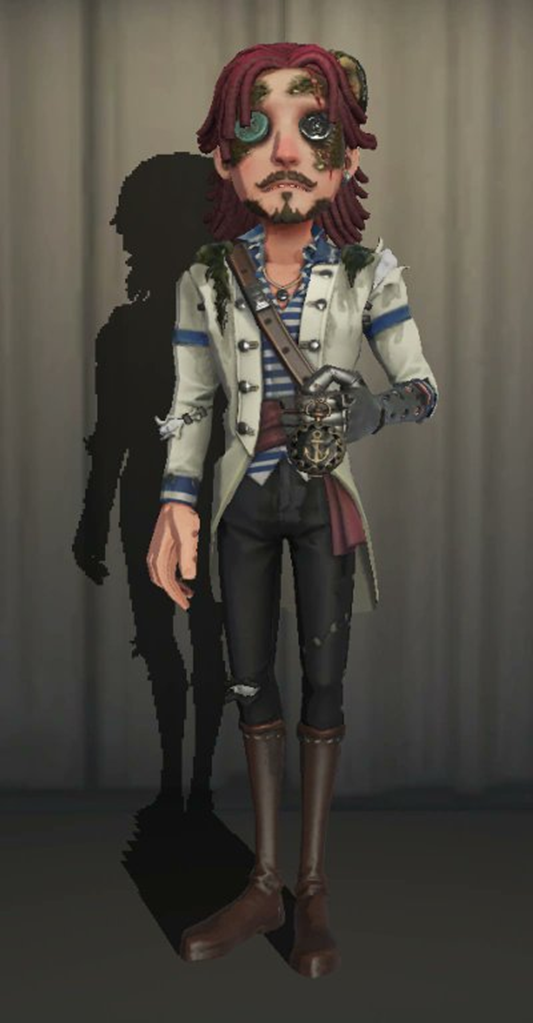
Believed manta rays (aka devilfish or sea devils) could attach themselves to a ship's anchor and drag them under the waves to Davy Jones' Locker.
Tattoos and piercing are said to ward off evil spirits, while gold hoop earrings are said to bring good luck.
Had a fatalistic view of drowning. If someone fell overboard, they might not even be thrown a rope because it was believed their death was preordained. “What the sea wants, the sea will have”. Besides, a sacrifice to the sea gods might placate them so no more of the crew would follow.
Umbrellas were for foul weather use, and bringing one on board was thought to tempt fate.
Believed that earrings improved eyesight.
Wore gold earrings so they wouldn’t go broke. Even if they spent all their money drinking, the sailor could buy their way out of trouble. And if he died in a foreign port, there’d be enough money to take care of funeral expenses.
Similar superstition that gold coins placed on the eyes of a corpse were used to pay Charon for the voyage across the River Styx.
Why Sailors Wore Earrings
It was a mark of their voyages.
Earrings were given to young sailors to commemorate their 1st crossing of the equator or when they rounded the treacherous waters of Cape Horn (Southern tip of South America).
Believed pierced ears would prevent sea sickness.
Believed gold earrings would protect a sailor from drowning.
Silver or gold earrings were worth enough to pay for a sailor’s funeral.
Some engraved the names of their home ports inside their earrings so their body could be sent to their families for a proper burial.
If a man died on a ship, the earrings helped cover the cost of transporting his body home so it wouldn’t be buried at sea or on foreign soil.
Some sailors dangled wax from hoop earrings, which they used as earplugs when firing the ships’ cannons to help protect against hearing loss.
#idv#identity v#jose baden#first officer#idv jose#identity v jose#idv first officer#identity v first officer#Happy Birthday Jose!!!#sirenjose analyses and theories
11 notes
·
View notes
Video
Steam Special por jpm uk-image
Por Flickr:
SR Merchant Navy Class 4-6-2 No 35018 'British India Lines' March 2019
3 notes
·
View notes
Text
The Princess Royal visits New Zealand

Day One
The Princess Royal arrived at Government House in Wellington and was welcomed by the Governor General of New Zealand, Her Excellency the Rt. Hon. Dame Cindy Kiro.
Day Two
Her Royal Highness started the day by meeting the Prime Minister of New Zealand, Christopher Hipkins.
The Princess Royal subsequently visited the National Crisis Management Centre at the Executive Wing in Wellington to meet those involved in the response to Cyclone Gabrielle.

“You should all be proud of the resilience, strength and care for your communities you are showing in the face of adversity.
Kia Kaha”
Her Royal Highness also visited the Museum of New Zealand.

As Colonel-in-Chief of the Royal New Zealand Corps of Signals, Her Royal Highness attended a reception to mark the centenary of the Corps.
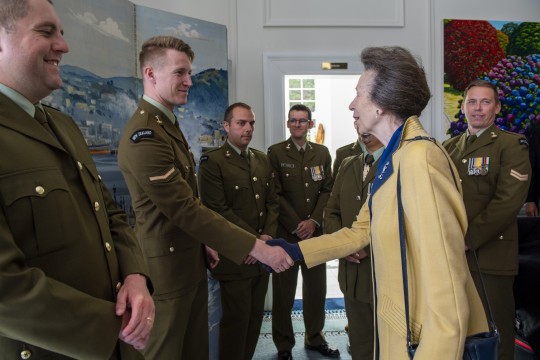
The day finished at the National War Memorial in Wellington, where The Princess attended a Service of Remembrance and laid a Wreath on the Tomb of the Unknown Warrior.
Day Three
Her Royal Highness visited the New Zealand Riding for the Disabled group in Porirua, and handed out rosettes to young riders and long-serving volunteers. The Princess joined Riding for the Disabled (RDA) as its Patron in 1971, later becoming President in 1985.

Next, Her Royal Highness opened the Mission to Seafarers new Wellington Mission, and later unveiled the foundation stone for the Mission to Seafarers and Merchant Navy Memorial at Wellington Cathedral.
The Princess is President of the charity, which provides support for the practical and spiritual welfare of seafarers of all nationalities and faiths.

Day Four
The Princess Royal started her fourth day in New Zealand at Tūranga Library in Christchurch, to hear about the rebuilding of Christchurch Central City and Christ Church Cathedral. Her Royal Highness also visited the site of Christ Church Cathedral in Cathedral Square.

Later, The Princess Royal attended the Rededication Service for the Citizens' War Memorial and laid a wreath in Cathedral Square.

As President of the Royal Agricultural Society of the Commonwealth, Her Royal Highness met representatives of the Royal Agricultural Society of New Zealand and Canterbury Agricultural and Pastoral Association at Canterbury Agricultural Park.

The Princess Royal later visited Untouched World Merino and Natural Fibre Workrooms.
Afterwards, Her Royal Highness visited Willowbank Wildlife Reserve. The Princess Royal is Patron of the New Zealand Conservation Trust.

© Royal UK
36 notes
·
View notes
Text

US and UK trigger new wave of attacks against Houthi targets in Yemen
Fernando Valduga
The USS Dwight D. Eisenhower (CVN 69) conducts flight operations in response to the increased evil behavior of the Iranian-backed Houthi in the Red Sea, January 22, 2024. (Photo: U.S. Navy / Mass Communication Specialist 3rd Class Kaitlin Watt)
The U.S. and the United Kingdom launched a new wave of attacks on Houthi targets in Yemen on January 22, hitting radars, missile support systems and underground weapons storage areas, the Pentagon said. The attacks were in response to the Houthi attacks on American commercial ships in the Red Sea.
The two countries operated with the support of Australia, Bahrain, Canada and the Netherlands and launched attacks “to disrupt and degrade the capabilities that the Houthis use to threaten global trade and the lives of innocent sailors,” according to a Pentagon press release. Specifically, the attacks were a response to Houthi attacks on commercial ships using "anti-ship ballistic missiles and attacks from unmanned air systems that hit two U.S.-owned merchant ships".

The attack was carried out with Tomahawk missiles launched on ships and submarines and combat planes, but the Pentagon did not characterize the number of weapons used. The operation targeted eight locations that include “a Houthi underground storage site and sites associated with the Houthi missile capabilities and air surveillance,” the Pentagon said.

The United Kingdom Ministry of Defense said that the attacks were calculated to minimize the risk to civilians and launched at night for the same purpose.

The US-UK operation marks the latest in a series of attacks that began on January 12, when the two countries hit more than 60 Houthi targets in about 30 locations around Yemen.
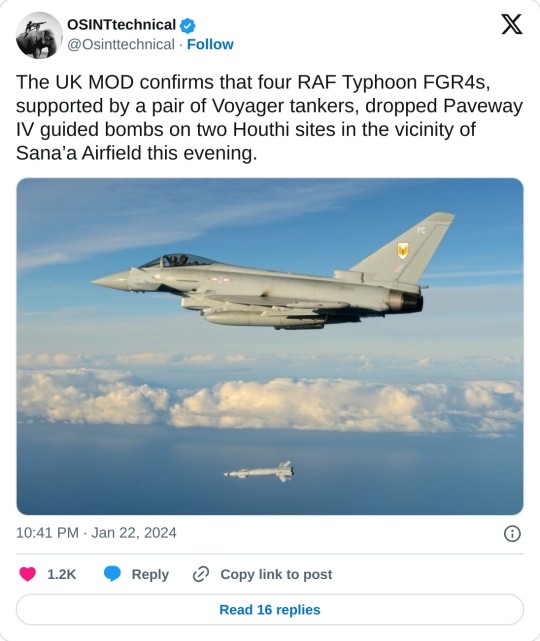
The Houthi say they are attacking the ships to show solidarity with Hamas fighting Israel in Gaza. They say that the ships hit or head to Israel with supplies or are operated by countries that support Israel in the Gaza war, launched after the Hamas terrorist attack on Israel on October 7. Houthi anti-ship and ballistic missile systems appear to be supplied by Iran.
The U.S. has responded to these more than 30 attacks since November with attacks against the launch sites and against the Houthi missile and surveillance capabilities, the Pentagon said.
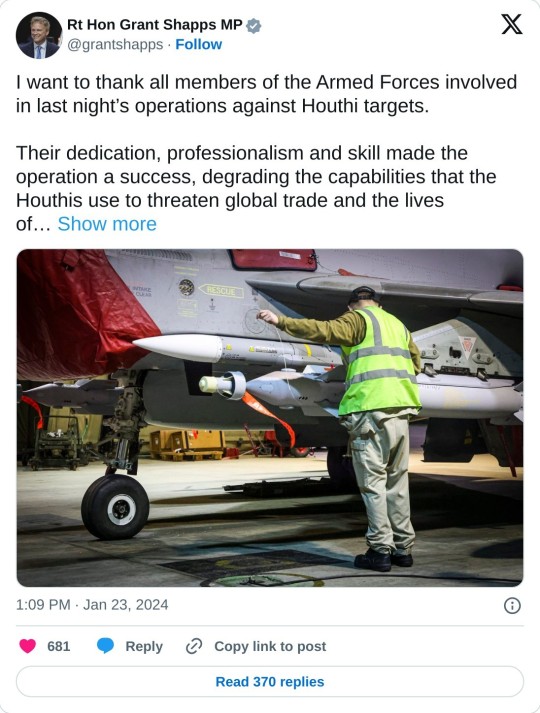
The purpose of the retaliations "continues to decrease tensions and restore stability in the Red Sea," the Pentagon said. "But let us reiterate our warning to the Houthi leadership: we will not hesitate to defend lives and the free flow of trade on one of the most critical waterways in the world in the face of continuous threats."
The U.S. stated that the attacks in Yemen are being conducted as part of “a coalition of countries with similar ideas, committed to defending rules-based order,” protecting freedom of navigation and international trade.
The U.S. hit targets in Yemen last week with F/A-18 Super Hornets fighters launched from aircraft carriers. The Pentagon said that these attacks were largely aimed at loaded missile launchers ready to fire.
Tags: Military AviationRAF - Royal Air Force/Royal Air ForceUSN - United States Navy/U.S. NavyWar Zones - Middle East
Sharing
tweet
Fernando Valduga
Fernando Valduga
Aviation photographer and pilot since 1992, he has participated in several events and air operations, such as Cruzex, AirVenture, Dayton Airshow and FIDAE. He has works published in specialized aviation magazines in Brazil and abroad. He uses Canon equipment during his photographic work in the world of aviation.
Related news
One of the S-70 Black Hawk helicopters delivered in Romania. (Photo: Lucian Bogdanel)
HELICOPTERS
Lockheed Martin and Aerostar open MRO center for the S-70 Black Hawk in Romania
23/01/2024 - 16:00
MILITARY
IMAGES: Indonesian Air Force receives fourth C-130J Super Hercules aircraft
23/01/2024 - 15:00
MILITARY
Saab receives request to produce T-7A jet fuselage systems
23/01/2024 - 09:00
MILITARY
RUSSIA: With the only aircraft carrier stopped in reform, MiG-29K embarked fighters were sent to the war in Ukraine
23/01/2024 - 08:49
MILITARY
Pentagon confirms start of serial production of the B-21 Raider stealth bomber
22/01/2024 - 21:59
MILITARY
B-1B bombers perform joint training with Singapore and Japan in the Indo-Pacific
22/01/2024 - 21:00
5 notes
·
View notes
Text
A Malta-flagged, Greek-owned vessel has been hit with a missile in the Red Sea off the coast of Yemen, maritime security firm Ambrey has said.
It is thought to be the third incident involving Zografia, a bulk carrier, in 24 hours.
Tuesday's incident comes as the US military announced it had seized Iranian-supplied weapons bound for the Houthis during an operation last week.
Meanwhile, the US has hit more targets in Houthi-controlled areas of Yemen.
An official told CBS, the BBC's American partner, that the US conducted further strikes on Houthi positions overnight.
Four anti-ship ballistic missiles that were ready to be launched were destroyed, the official said.
The US and UK launched a wave of airstrikes against dozens of Houthi targets on 11 January following attacks by the Iran-backed group on shipping in the Red Sea.
It is not yet known what was attacked in the latest US operation.
The Houthis have vowed to retaliate.
On Sunday, the US said it had shot down a missile fired towards one of its warships from a Houthi area of Yemen.
A day later, the group said they had carried out a ballistic missile strike on a US-owned cargo ship in the Gulf of Aden.
While it has not yet been confirmed that Tuesday's attack on the Greek-owned vessel was carried out by the Houthis, it appears to follow a similar pattern of strikes.
Who are the Houthis attacking Red Sea ships?
Several vessels have been targeted by the movement's fighters since November in protest at Israel's war with Hamas.
The Houthis say they are targeting vessels which are Israeli-owned, flagged or operated, or are heading to Israeli ports. However, many have no connections with Israel.
The Zografia, which was empty, was sailing from Vietnam to Israel with 24 crew onboard when it was struck on Tuesday, Greek shipping ministry sources have told the media.
No injuries were reported, only minor damage to the carrier. The Houthis later claimed responsibility for the attack.
The Red Sea connects the Indian Ocean to the Mediterranean via the Suez Canal but several shipping lines have announced they are now diverting round the Cape of Good Hope to reach Europe instead.
British oil giant Shell on Tuesday became the latest to suspend all of its shipments through the Red Sea indefinitely, according to the Wall Street Journal.
The US said on Tuesday that analysis of the weapons it seized from a ship near the Yemen coast suggested the Houthis had been using the same kind of weapons in their Red Sea attacks.
The seizure took place on 11 January near the coast of Somalia - the same day as the first US-UK airstrikes.
Cruise and ballistic missile components were among the items found on a ship, as well as parts for air defence equipment.
"This is the first seizure of lethal, Iranian-supplied advanced conventional weapons (ACW) to the Houthis since the beginning of Houthi attacks against merchant ships in November 2023," US Central Command said in a statement.
The ship - a traditional vessel known as a dhow - was considered unsafe and sunk by the US. Legal responsibility for the 14 crew members is being determined.
Central Command also said a search is continuing for two Navy Seals who were lost overboard during the operation.
According to media reports, one officer was knocked off the ship by high waves and the second jumped in afterwards to try and help as is required by protocol.
Washington has blamed Iran for being behind the Houthi missile capability, which Tehran denies. Iran's foreign minister, Hossein Amir-Abdollahian, said in a press conference on Monday that the West must stop the war against Yemen immediately.
In a separate development, the Greek ambassador to Iran is reported to have issued a formal appeal to Tehran to release one of its citizens - the captain of an oil tanker that was seized last week.
Armed men wearing masks boarded the vessel St Nikolas, close to the port of Sohar in Oman, on Thursday and ordered it to sail to an Iranian port.
Tehran said the seizure was in retaliation for the ship and oil it had aboard being confiscated by the US last year.
The vessel's owner, Empire Navigation, said on Sunday that it had been told by Iran that all of the tanker's 19 crew were safe and in good health.
2 notes
·
View notes
Text

I actually maintain that the country that "won" ww2 was Canada. So, like, both UK and USSR loose without constant supply convoys across the Atlantic from the US. The Germans knew this, so they had their submarines target these convoys. That's practically the only thing that the German Navy was good for for the entire war. This necessitated escort ships to defend the merchant fleets across the Atlantic. Escort ships that were predominantly crewed by Canadians.
5 notes
·
View notes
Text
Initially, I thought Cailitn and Connor were twins or at least the same class.
I'm going through and updating my Docs and Sheets on the characters right now, and I've been considering making them British engines instead of American engines. It just makes much more sense to me as well as helping with the size issue. American engines are typically massive. Take this photo of LMS 6229 Duchess of Hamilton (streamlined) and a BO P-7 class for example.

Source
To clarify, I love Caitlin and Connor as they are! Definitely two of my favorite CGI-only characters from T&F, but I just don't think their basis are correct for this. Think about it.
The Earl is ALL about preservation and to me, it just seems like he'd be more interested in preserving non-streamlined steam engines more than streamlined steam engines. Maybe that's a better reason as to why he chose Caitlin and Connor, but unless he's having them travel all over the United Kingdom, why would they be streamlined. Originally, I assumed they would go to Barrow-in-Furness from Ulfstead Castle with no stops, which is somewhat the case.
And then their size becomes the issue. I'm trying to stick as close as to real-life circumstances as I can, and having them be cut down to size isn't an option I want to default to when it comes to American steam engines working on the North Western Railway. I'm already using the "they were just built different for UK railways" storyline for another character.
So I'm currently considering the following locomotives:
LNER A4s: I know I questioned the streamlining situation but I think it makes more sense for them if I do have them travel the majority of the United Kingdom to collect passengers for Ulfstead Castle. This would be an interesting option because they'd act so differently to Spencer, considering they're privately owned like him.
LMS Coronation Class: This is could work either way because I'm also considering the possibility that the journeys had to be stopped at Barrow-in-Furness when dieselisation happened and the last of the steam engines were withdrawn from service. At that point, streamlining is unnecessary so the casings are removed.
LMS Princess Royal Class: If I decide not to go the streamlined route or I want to make one of them a different class.
These were chosen for multiple reasons, those being:
I would like to keep the single survivors as they are, like Blue Peter, Tornado, Flying Scotsman, and Duke of Gloucester, which they will be joined by Hengist, a BR Standard 6. This already knocks off the LNER Gresley A3s, LNER Peppercorn A1s, LNER Peppercorn A2s, BR Standard 8, and BR Standard 6.
Go for a class that isn't made up of one example, such as the single BR Standard Class 8, Duke of Gloucester, and GWR 111, The Great Bear.
Cannot be classes that have already been used, keeping that heavy diverse of classes on the Island of Sodor and character roster in general. This knocks off the SR Merchant Navies, as well as the SR Battle of Britians and West Countries, and the LMS Royal Scots, rebuilt and unrebuilt for all three.
Not to use any recent classes, specifically BR. This crosses off the BR Standard 7.
Drop classes that wouldn't have survived by at least the 1950s. This crosses out the LNER Raven A2s and GWR 111.
The 4-8-4 configuration is a definte "No." It was considered to be too much by the LNER when the Hush Hush was released into traffic. Even though it was rebuilt with the body of a A4, it still retained its wheel configuration. It just seems too much for the NWR, considering its size. Its slightly bigger than the Furness Railway from what I've gathered. (If not, they're about the same size.)
These are the engines from the UK that I have listed so far, so I have still have more classes to sift through. The American steam engines are already a "No," due to their massive size. I have the following that could be really good candidates, because I'm pretty damn sure the Earl would love to preserve/operate a foreign engine. It just screams like something he would do. However, this list contain streamliners.
New South Wales C38 class: This one because they look similar to the Hudsons. Like the LMS Coronations, their casings can be removed to unveil the nonstreamlined version. Built in the 1940s.
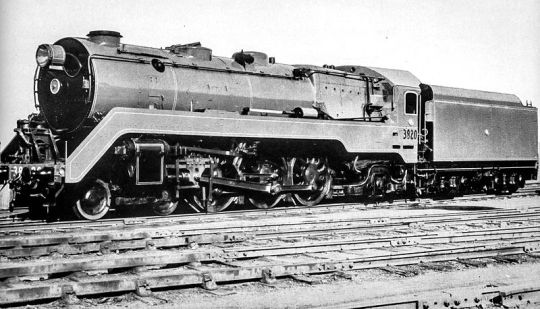
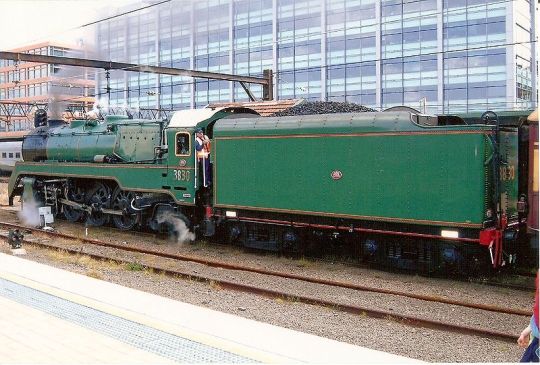
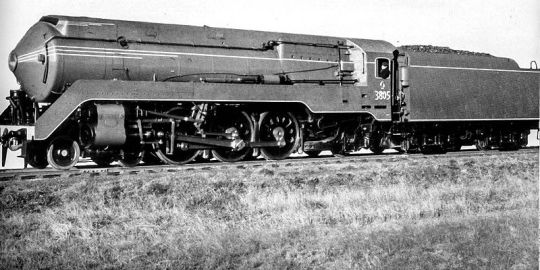

Source: Wikipedia
Iraqi State Railways PC class: Similar design to the streamlined LMS Coronations with the valenced similar to those of the LNER Gresley A4s. Purely streamlined. I haven't found a photo where its not streamlined. Built in the 1940s. Only international option I've chosen that doesn't have any survivors to this day.

Source
DRB Class 01.10: Another streamlined engine that can have its casings removed. Built in the 1930s.


Source: Wikipedia
"But wait a minute, you just said this about the streamliners-" yeah I did but here's the thing. Connor and Caitlin are KNOWN AS streamliners. They're known to be different to the other engines and extremely fast. I would like to keep that as the first thing you know about them. They're ✨ streamlined ✨.
But then here comes another issue (this is post is so damn long- wut 😭)
I want to make "Best Engine Ever" canon to EoSR but I can't think I can pull off how dangerous it becomes since all of the examples I've mentioned have front buffers and they don't really have skirts, excluding the Iraqi State Railways PC class.
With all of this taken into consideration, I'm definitely leaning towards the New South Wales C38 as Connor's basis, just because the front reminds me of his T&F basis. They're green which is closer to the teal/blue Conor is originally in. As for Caitlyn, I'm somewhat considering the Iraqi State Railways PC class. It's a very good candidate, in my opinion, but the paintwork is what's throwing it off. I don't want to end up with two green engines, though it looks like the PCs used a mint green.
I'm just not entirely convined by the UK steam engines, though technically the Iraqi State Railways PC engine is English since this basis was built in England.
These classes were built mostly before BR era (C38s: January 1943 - November 1949 & PCs: 1940), they look smaller than the American engines and about the same size as the UK built engines, and they have visual aspects that remind me of their original basis from Thomas and Friends. Neither class only has a sole survivor. The Iraqi State Railway PCs having no surivors while the New South Wales C38s have four survivors. Neither class is made up of one example or been used as a basis for another character. Both classes survived past the 1950s and early-1960s, with the lastest withdrawal being that of a C38 in 1970.
So this is my overly-complicated and probably unnecessary analysis/research for Connor and Caitlin's new basis because I'm weird and want to stick as close to the real-world as much as I can. I wrote this within the span of two days because i was doing research as I was writing this so consider this post as a bunch of notes (which is part of the reason why I kept contradicting myself when it came to streamlining 🤡).
#her train of thoughts#ttte caitlin#ttte connor#engines of sudrian rails by muxse#long post#tw long post#cw long post#not my photos#pretty sure this is my longest post 😭#ty Tumblr for having the ''Read More'' feature :''''D
4 notes
·
View notes
Photo

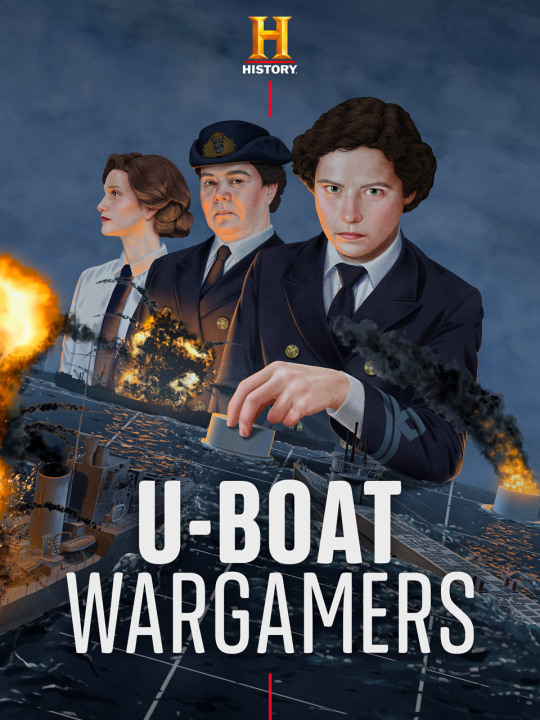
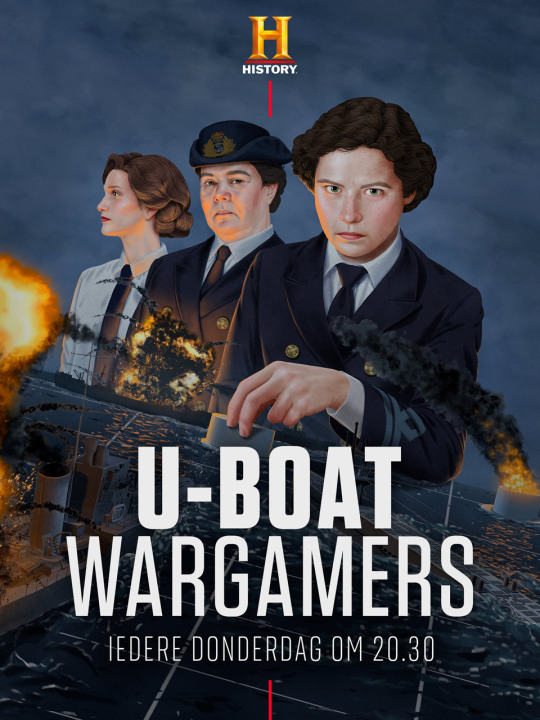
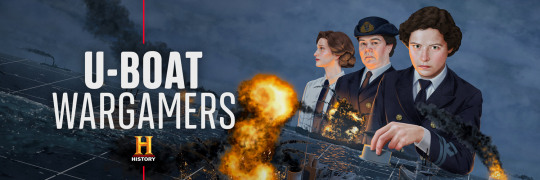

Huge key art (18,750px aka 62.5 inches wide!) for U-boat Wargamers on Sky History UK. January 1943: Britain is on the brink of starvation from ruthless Nazi attacks on merchant ships. The Navy cannot spare any men. Enter the WRNS (Women’s Royal Navy Service) to war game the tactics to defeat the enemy U-Boats.
#history channel#u-boat#u-boat wargamers#wargamer#wargame#war game#war gamer#WRNS#women's royal navy service#wwii#world war ii#german u-boat#u boat#submarine#battle of the atlantic#military strategy#military tatctics#navy#royal navy
3 notes
·
View notes
Video
Hawker Sea Hurricane Ib ‘Z7015 / 7-L’ (G-BKTH) by Alan Wilson
Via Flickr:
c/n CCF/41H/4013. Owned and operated by the Shuttleworth Collection and seen taking off to display at the collection’s 2022 Season Premiere Air Show. Old Warden, Bedfordshire, UK. 1st May 2022 The details below were from a previous version of the Shuttleworth Collection website:- "After the early success of the Hawker Hurricane in RAF service during the Battle of Britain, the Royal Navy decided to introduce the Hurricane as protection for the Atlantic convoys. These convoys were being monitored by FW-200 Condor aircraft, which operated far outside the range of land based aircraft, and co-ordinated the attacks of the U-boats on the convoys. An interim measure gave birth to the 'Hurricat', a modified Hurricane which was mounted on a catapult located on the bows of some modified merchant ships. The only modifications to the Hurricane for this role was the addition of catapult spools and as such were designated Sea Hurricane Ia's. These Sea Hurricanes were not ideal, as once they were launched they either had to make it back to a land base or ditch in the sea near to the convoy. An improved Sea Hurricane was the Ib, this had the catapult spools and an arrester hook to enable them to land back on merchant ships modified to have a small flight deck. Hurricane Z7015 was built by Canadian Car & Foundry at its Fort William, Ontario, plant during 1940 as a Mk I, after flight testing Z7015 was shipped to the UK. On June 27 1941 it was converted to Sea Hurricane Ib standard. Z7015 had a patchy wartime flying career, which ended in 1943, when it was delivered to Loughborough College as an instructional airframe. It remained there until it was transferred to the Shuttleworth Collection in 1961. Z7015 was used statically in the 'Battle of Britain' film, before restoration to flying condition began. Several attempts to restore the aircraft were made, until in 1981, Z7015 was transferred to Duxford and another restoration was started, this time by the Duxford Aviation Society. This restoration was progressing slowly until a formal agreement was reached between the Imperial War Museum and the Shuttleworth Collection, which meant that the same team that had restored the Collection's Spitfire would restore Z7015. The renewed restoration started in earnest in February 1986 and led to the first flight of the World’s ONLY Sea Hurricane Ib, in the hands of pilot Andy Sephton, on September 16 1995."
3 notes
·
View notes
Note
Top 5 irl locos!!
(Recently watched some history stuff lmao)
I've done USA locomotives so for this one i'll be interpreting this question as IRL Locomotives of all time, I will unfortunately have to exclude the ones that I have listed in the USA list.
Unlike the USA list this one won't be in any particular order.

[5.] SR West Country Class Tangmere - Honestly the fact that she's apparently gotten into a Whole shit load of problems is pretty funny and honestly gives her a lot of personality to a degree. The West Countries and Merchant Navies are a pretty up there in favourite locomotive classes primarily because their boxy streamlined shape compared to the duck bill of the A4s and the bullet shape of the Coronations and I feel like that kinda makes the class stand out amongst the UK streamliners.

[4.] LNER A1 60163 Tornado - Tornado holds a special place in my heart, though this is primarily because of how I write them in Locomotion however I have other reasons as to why they're in this list. They're a new build from scratch steam locomotive of a (pre-2009) extinct class of locomotives and they're kinda living up to that legacy of sorts And being steps in steam preservation.

[3.] LNER A1/3 4472 Flying Scotsman - I think my copious amounts of Scotsman content can already speak for itself. They're famous, she went 100 miles and he got on TV shows and documentaries so I think many people can already get the appeal. I don't exactly have much that hasn't been said about the Flying Scotsman because what I'll say about the engine has already been said more eloquently that me lol.
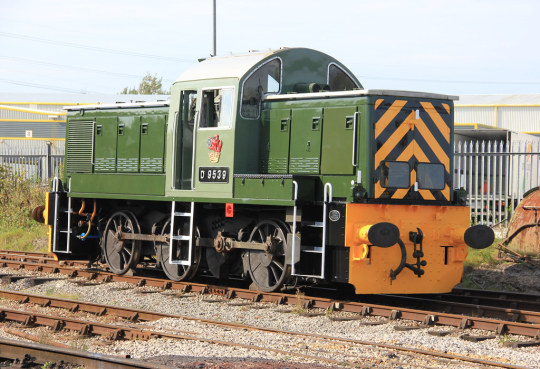
[2.] The BR Class 14 - Okay this is on the list primarily because of that One video where the preserved ones are in a line honking their horns and it's so fucking cute please look it up if you have the time. Also they're little fucking dudes!! What more can you get?
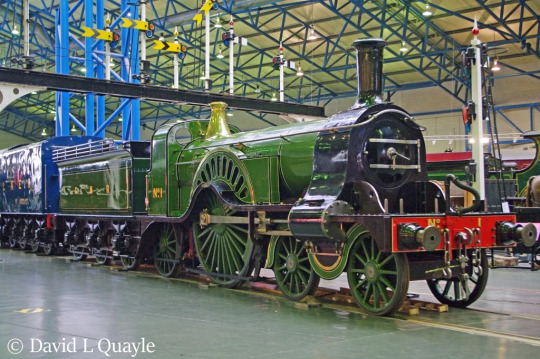
[1.] GNR Stirling Single - Beautiful locomotives the Stirlings are! Like the boiler sort of merging with the cylinders really give it a nice shape and the fact that one of the class took part in the Race to the North and just well IT in general.
4 notes
·
View notes
